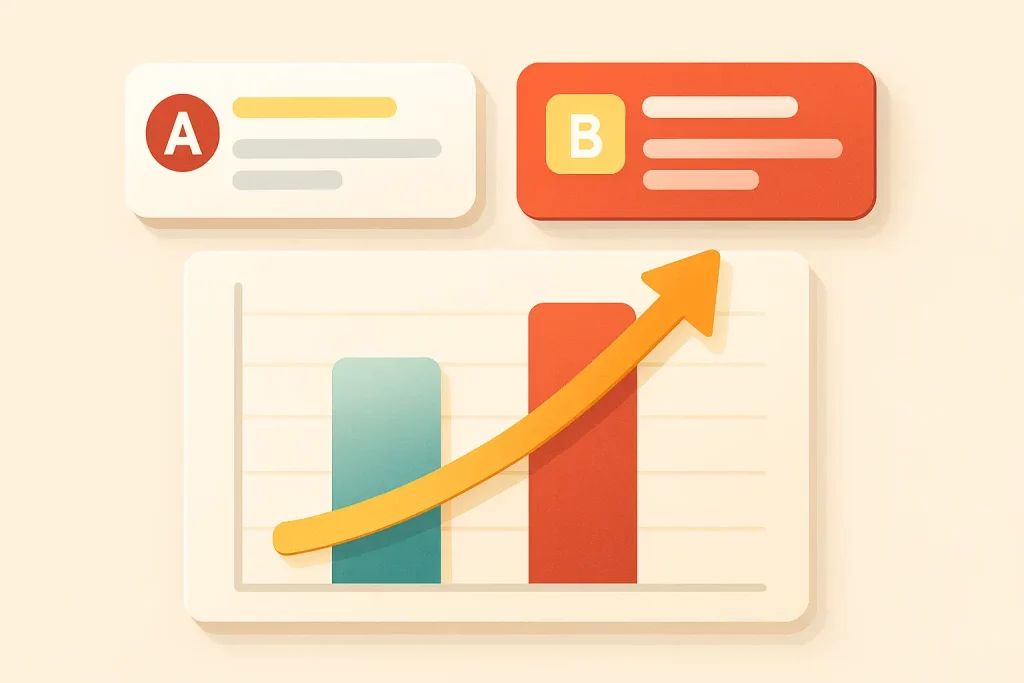In today’s competitive e-commerce landscape, standing out and driving conversions requires a multi-faceted approach. While email marketing remains a cornerstone, push notifications offer a powerful, direct channel to engage customers in real-time. But simply sending notifications isn’t enough; to truly maximize their impact, you need a data-driven strategy. That’s where A/B testing comes in. This guide will walk you through how to effectively A/B test your push notifications to significantly improve your campaign performance and ultimately boost your bottom line.
Why A/B Testing is Essential
Many Shopify merchants send out push notifications without a clear strategy, relying on gut feeling rather than data. This is a missed opportunity. A/B testing allows you to systematically experiment with different elements of your push notifications to identify what resonates best with your audience. Instead of guessing what works, you’ll have concrete evidence to inform your decisions, leading to:
- Higher click-through rates (CTR): By testing different messaging, calls to action, and timing, you can dramatically increase the number of users who click on your notifications.
- Improved conversion rates: A higher CTR naturally translates to more conversions, whether it’s completing purchases, signing up for newsletters, or engaging with specific content on your site.
- Increased customer engagement: Understanding what your audience responds to allows you to build stronger relationships and foster loyalty.
- Optimized campaign ROI: By focusing your efforts on what works best, you’ll get a better return on your investment in push notification marketing.
In short: A/B testing transforms your push notification strategy from a guessing game into a finely-tuned, high-performing engine.
Elements to Test
There are several key elements within your push notifications you can A/B test to optimize their effectiveness. Remember to only change one element at a time to accurately gauge the results.
Messaging
The message itself is crucial. Test variations in:
- Headline length and style: Short and punchy versus longer, more descriptive headlines.
- Tone: Formal versus informal, urgent versus casual.
- Value proposition: Highlighting different benefits or features of your products or offers.
- Personalization: Using the customer’s name or referencing their past browsing behavior.
Timing
The time you send your notifications significantly impacts their effectiveness. Experiment with:
- Day of the week: See which days yield the highest engagement.
- Time of day: Test sending notifications at different hours to determine peak responsiveness.
- Frequency: Balance the benefits of regular engagement with the risk of notification fatigue.
Call to Action (CTA)
Your CTA is what drives the user to take the desired action. Test variations in:
- Verbiage: “Shop Now,” “Learn More,” “Get Your Discount,” etc.
- Urgency: Adding a sense of scarcity or time limits (“Limited Time Offer”).
- Clarity: Ensuring the CTA is easily understood and relevant to the message.
Setting Up A/B Tests
Most effective push notification platforms, like Pushloop, provide built-in A/B testing capabilities. This allows you to easily create multiple variations of your notifications and track their performance side-by-side. Here’s a general approach:
- Define your hypothesis: What do you want to test, and what do you expect to see? For example: “We hypothesize that a shorter, more urgent headline will lead to a higher click-through rate.“
- Create variations: Develop different versions of your notification, changing only one element at a time.
- Set up your A/B test: Configure your platform (e.g., Pushloop) to distribute your variations to a random segment of your audience.
- Monitor your results: Track key metrics such as CTR, conversion rate, and overall engagement. Allow the test to run long enough to gather statistically significant data.
Analyzing Your Results
Once your A/B test is complete, analyze the data to determine which variation performed best. Look beyond just the raw numbers; consider:
- Statistical significance: Ensure the difference in performance between variations is statistically significant and not due to random chance.
- Qualitative feedback (if available): While quantitative data is key, gathering qualitative feedback can offer additional insights.
- Overall campaign goals: Which variation best aligns with your overall marketing objectives?
Based on your analysis, implement the winning variation and continue iterating your push notification strategy through ongoing A/B testing.
Continuous Improvement Through Data Analysis
A/B testing is not a one-time event; it’s an ongoing process of continuous improvement. By consistently testing and analyzing, you’ll gain a deep understanding of your audience’s preferences and optimize your push notification campaigns for maximum impact. This data-driven approach ensures that your efforts are not only effective but also efficient, ultimately boosting your e-commerce performance.
Tools like Pushloop can significantly simplify the A/B testing process, providing the necessary features and analytics to make data-driven decisions. By leveraging the power of A/B testing and the right tools, you can transform your push notification strategy into a high-performing engine for customer engagement and revenue growth.

